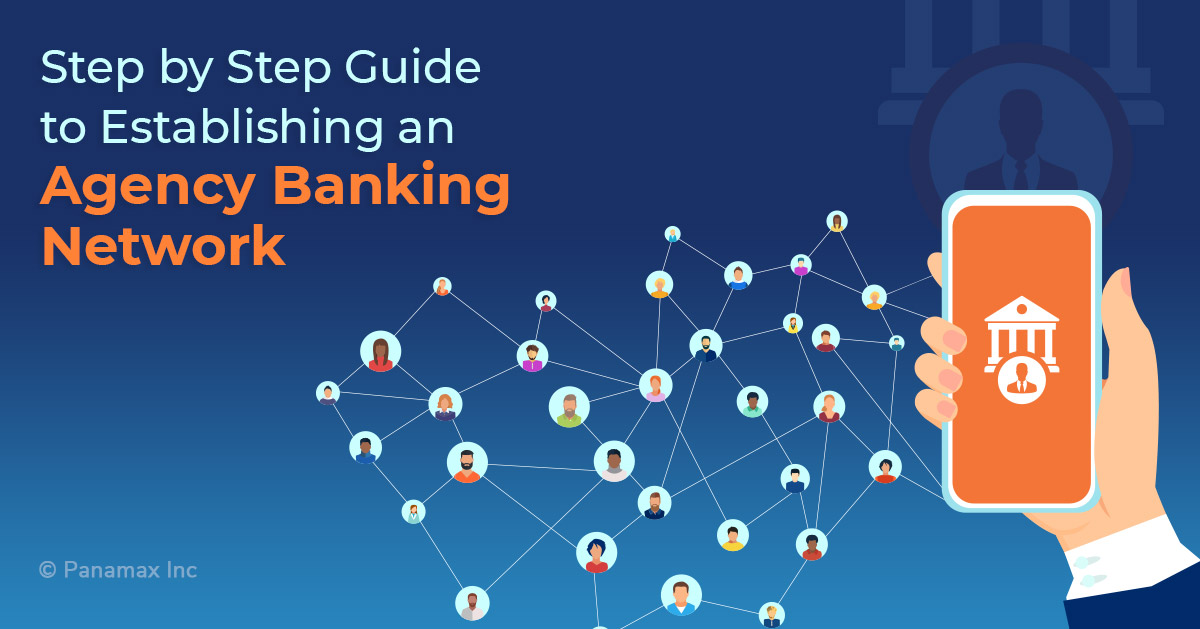Financial institutions and banks in several countries are coming up with ways other than traditional banking for financial inclusion of the unbanked people staying in remote/rural areas. Opening and running a traditional bank branch is often an overwhelming process for the banks. Agent banking or branchless banking allows financial institutions to deliver their services to a majority of poor households residing in remote areas through a network of retail agents. Agency banking is a holistic solution that aids the entire financial ecosystem including people in remote areas, retail agents as well as the banks.
Agent banking services help banks to expand their customer base by onboarding new customers who were previously out of their reach without investing enormously in physical bank branches, infrastructure, and manpower costs. The retail agents benefit as they get an opportunity to generate additional income, including sales from additional footfall. This allows the retail agents to differentiate themselves from competitors as they are associated with well-established banks. Lastly, the formerly unbanked and underbanked customers from rural areas can get easy access to a financial institution without having to travel long miles.
Building an Agency Banking Network in 5 Easy Steps
By realizing the exceptional advantages of branchless banking, more and more banks are moving away from the idea of setting up new bank branches in rural areas. Though the idea sounds convenient, setting up an agency banking network is quite complex. Also, it is crucial to set up an effective network as these retail agents are the face of the banks in rural areas. Follow these 5 key steps to set up a robust agent banking network.
Assessment and Affiliation with Governmental Guidelines
Before establishing an agent network of your bank in a rural area, it is crucial to understand the amended laws the government and central bank of the country have formulated on branchless banking. The banks must assure that the services delivered in rural areas by agents are in alignment with the provisions. For instance, common transactions like payments, deposits, withdrawals, savings accounts, and loans can be carried out by banking agents in countries like Colombia, Brazil, and Peru. But in Mexico, their activities are restricted to specific types of payments, deposits, and withdrawals.
Strategize the Geographical Spread of Banking Agents Optimally
One of the most common mistakes made by financial institutions is to attempt to enlist as many agents as possible to swiftly roll-out their services. Certainly, to be able to reach existing and new customers, each banking agent should be close to rural customers. Thus, it is vital that the banks strategize the spread of the agents in such a way that their services are within the reach of maximum rural customers but does not promote competition amongst the agents. This will help the banks to avoid unethical practices by agents to attract customers.
Choose the Right Kind of Partner for Agent Banking
While choosing partners/agents to deliver banking services, banks and financial institutions should make sure that they have established distribution networks that can reach the current as well as potential customers. Apart from FMCG and telecom companies, these agents can also be the owners of small shops in villages and towns, pharmacy shops, consumer goods distributors, or petrol station operators. While choosing such agents, banks must make sure that they have a long-standing relationship with the dwellers of the village/town.
Choosing and Implementing the Right Technology
While implementing agent banking in remote areas, a bank needs to invest in an appropriate technological platform to extend their services and mitigate fraud. Furthermore, the agents must get complete support from the banks that includes necessary equipment and internet connectivity to function autonomously. Agency banking solution by Panamax allows you to deliver all essential and value-added services in remote areas.
Supervise and Expand the Agent Banking Network
After the branchless banking network is established, all agents must be trained in matters of customer care and relationship management, information technology, loan application and repayment, marketing, finance, and accounting. To guarantee that the agent network is profitable, banks must recognize how many of the registered agents are truly active and profitable. Further on, banks must also evaluate the reason why an agent is inactive. It is possible for various reasons, such as too much competition in the vicinity, being a misfit, the inability to connect with the right customers to market and sell the banking services. The performance of agents must be continually monitored by the banks to ensure reasonable ROI. With the help of Panamax’s digital Core Banking System, banks can efficiently execute common banking transactions through these agents remotely.
Aiding Banks in Extending their Rural Footprints
By deploying an agency banking solution, banks support the agenda of financial inclusion in developing countries and generate increased revenue and market share. Alongside, owing to the personalized touch of agents, this method of banking boosts customer loyalty and increases brand affinity, which is crucial for banks and financial institutions in a highly competitive market.
With agency banking services by Panamax, banks can take their branch directly to customers and provide both essential and value-added services at their doorsteps. The solution allows banks to easily create new accounts, new applications, edit loans, and do a lot more.
Related Blogs
Agent Banking: Transforming the Banking Industry
Why is Agency Banking the Silver Bullet for Financial Inclusion?


















